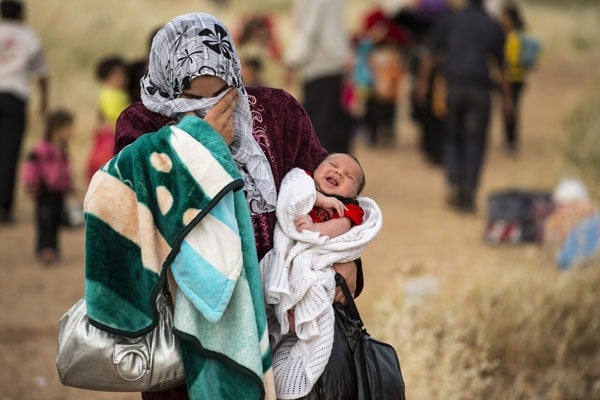
Ruffling feathers and challenging consensus: Humanitarianism under the microscope at U of T
Published: April 5, 2016
People interested in learning about and debating humanitarianism had a choice of events at the University of Toronto’s Munk School of Global Affairs earlier this year.
In one part of the building, students from the Trudeau Centre for Peace, Conflict and Justice were staging a two-day conference called “Humanitarianism Exposed: Non-governmental and private sector perspectives on aid and development.” Down the hall, other U of T scholars were holding a symposium called “Crisis and the Humanitarian Present: Thinking through the 2015 Nepal earthquake.”
And if you weren’t able to attend either of the Munk events, there’s always the upcoming World Humanitarian Summit being held in Istanbul next month. The first of its kind, the summit was organized by United Nations Secretary-General Ban Ki-moon “to propose solutions to our most pressing challenges and set an agenda to keep humanitarian action fit for the future,” according to the summit website.
Humanitarianism is in the news – and on conference agendas – these days, partly because of the Syrian crisis. But humanitarianism is not a new concern for the world community, said Wendy Wong, director of the University of Toronto’s Trudeau Centre for Peace, Conflict and Justice. “If we look back in history, we’ve had lots of humanitarian crises. So is this any more important than Ethiopia in the 1980s or Biafra before that?”
According to Wong, the difference is that the world has more access to information about Syria than it did about Ethiopia or Biafra. Also, she said, the world has come to realize that humanitarianism requires more than just a short-term response. “We’ve reached a point in the 21st century where it’s very clear that a lot of these conflicts are protracted. They’re not just humanitarian crises in the conflict sense, but in other ways as well, such as development, and access to essential things like food, water, shelter and medical attention.”
Conference organizers Bushra Nassab, Jahaan Pittalwala and Brian Malczyk were pleased with the event. “A lot of academic conferences have the idea that you should come away with the lowest common denominator, with everybody happy and satisfied,” Pittalwala told U of T News. “We wanted to challenge that.
"We thought people weren’t having the conversation that we think they should be having, so we pushed the speakers to talk about things that they wouldn’t necessarily mention if they were reaching for consensus. And that led to a lot of side conversations and a lot of ruffled feathers, which was exactly what we wanted.”
Pittalwala said world humanitarianism has a lot of functional problems that aren’t being talked about. For example, an appropriate humanitarian response in one part of the world might not work elsewhere.
The need to be aware of local circumstances was also discussed at the symposium on humanitarianism and Nepal. Symposium organizer Katharine Rankin, a U of T geography professor and interim director of the Centre for South Asian Studies, said the humanitarian crisis in Nepal resulted because the earthquakes occurred at a time of political turmoil. “Seismic instabilities and political instabilities compounded one another. It underscores the relationship between political and natural elements,” she said.
The earthquakes killed thousands and left many more homeless, Rankin said. The world responded with aid – food, medicine, construction materials and other resources, as well as volunteers. But, Cornell University professor Kathryn March told the symposium, often that aid was either ineffective or misdirected. Some hard-hit regions received less assistance than less affected areas and the aid was often inadequate or inappropriate. Part of the blame lay with Nepalese politicians and bureaucrats, she said, but logistical factors and long-standing ethnic tensions also played a part.
(Visit flickr to see the original of the refugee photo used at top)



